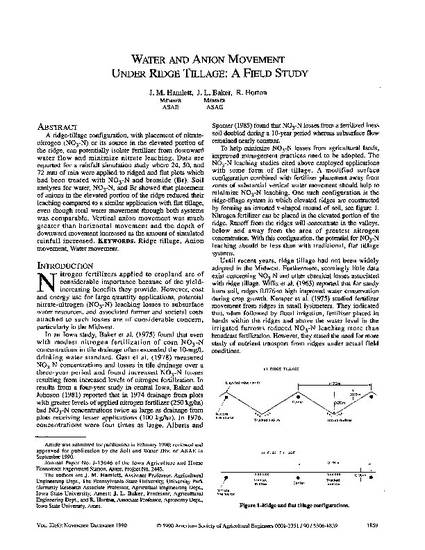
A ridge-tillage configuration, with placement of nitrate-nitrogen (NO3-N) or its source in the elevated portion of the ridge, can potentially isolate fertilizer from downward water flow and minimize nitrate leaching. Data are reported for a rainfall simulation study where 24, 50, and 72 mm of rain were applied to ridged and flat plots which had been treated with NO3-N and bromide (Br). Soil analyses for water, NO3-N, and Br showed that placement of anions in the elevated portion of the ridge reduced their leaching compared to a similar application with flat tillage, even though total water movement through both systems was comparable. Vertical anion movement was much greater than horizontal movement and the depth of downward movement increased as the amount of simulated rainfall increased.
Available at: http://works.bepress.com/robert-horton/20/

This article is published as Hamlett, J. M., J. L. Baker, and R. Horton. "Water and anion movement under ridge tillage: a field study." Transactions of the ASAE 33, no. 6 (1990): 1859-1866. doi: 10.13031/2013.31550. Posted with permission.